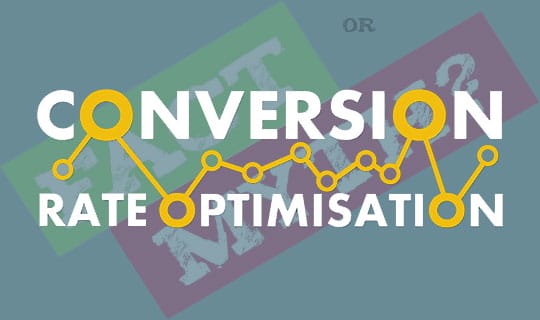Hola, eCommerce entrepreneur! Hope, you are doing well; or maybe you are not doing it all well or maybe you are perennially on your toes to do well. But… Hey, let me tell you this, whatever your story maybe… by coming here you have jumped into a magical oasis that is sure to quench your thirst of making more business and eventually minting more money.
If you own an eCommerce online business you already know this. eCommerce isn’t easy. Any business is a game. In order to win the game, you just need to know the game. And here lies the answer to all your questions “Know the Game, Know Your Business”.
Let me tell you this, whatever your story may be… by coming here you have jumped into a magical oasis that is sure to quench your thirst of making more business and eventually minting more money.
Don’t you just wish that there was a certain surefire way to know how good (or unfortunately, bad) your online business is doing? Shouldn’t there be some kind of ‘Report card’ for this too?
ECommerce works differently than an offline store. However, there are certain indicators that help you measure the performance of your online business and let you understand it better. Some of these indicators have the potential to track most of the business objectives separately as well as simultaneously. Such holistic eCommerce indicators are often deemed as Key performance indicators (KPIs, wiki).
Hereby is the list of Top 9 eCommerce KPIs that help you to understand your business and also are a reason for boosting up your sales.
1. Conversion Rate

We live in an era where likes and followers are traded on a regular basis. But the actual challenge for a business or for any of the best eCommerce platform would be to bring eCommerce solutions that bring organic traffic and potential customers to the website. For instance, 1000 visitors and 90 purchases > 10000 and 100 purchases. Conversion Rate helps you just measure this. Conversion rate is nothing but the percentage of visitors that convert into actual buyers. Thus a 1000 visitors and 90 purchases have a conversion rate of 9% and 10000 visitors and 100 purchases have a 1% conversion rate.
Better conversion rates suggest better performance. Jog your memory and tell me in the comment section below, “What do you do / Which steps are you currently taking to better your conversion rate?”
Recommended for you: How to Launch Your eCommerce Brand Quickly & Successfully? – 5 Rules to Follow!
2. Cart Abandonment Rate

The name itself makes the KPI easy to understand. Cart Abandonment Rate is the rate of visitors that leave the transaction mid-way by adding the item to the cart but not checking out with it. This rate has the capability to tell a lot about your business. Suppose a 100 transactions are initiated and a 10 of them actually make a purchase. Thus the cart abandonment rate, in this case, is 90%.
Cart Abandonment Rate = 1- {Number of Purchases%Number of Transactions Initiated} *100
But…Hey, Worry Not! Leaving a transaction undone is not a very big issue, as we are dealing in eCommerce; where a visitor has unlimited and free access to a plethora of options. According to a report by some eCommerce solution software on an average, 69 out of the 100 orders are abandoned. You cannot expect a nil abandonment rate but lower the rate, higher is the performance of your business.
Focus on problems like what is it that sways my customer away? Is my competitor selling the same product at a cheaper price? Or What is that, creating friction to my sales? Or rather consult an eCommerce solution provider and it will walk you through the best shopping cart solutions available in the web space.
3. Average Order Value (AOV)

Let us consider an example to understand this vital metric a bit better. Suppose an eCommerce website builder has two websites: ‘Website Good’ and ‘Website Better’. Let’s assume both the websites have the same total revenue x and the same gross profit ratio. But the difference lies in the number of orders taken. ‘Website Good’ earns its total revenue x by taking let’s say, 10 orders whereas ‘Website Better’ earns the same revenue by taking 5 orders a day.
In this case, ‘Website Better’ is doing better than ‘Website Good’. For its Average Order Value is more than that of ‘Website Good’.
Average Order Value is the Ratio of Total Revenue and Number of Orders taken. Thus, the website that does more business with fewer people is going greater than the one, doing more business with many people.
For augmenting the AOV ratio, a website should focus on enticing its existing customers by giving them more of what they want. The rest is what you already know… Tell me your enterprise eCommerce solutions for satisfying your existing customers rather than lurching for finding new potential customers… in the comment section below.
4. Average Session Duration

This KPI calculates the meantime that a visitor spends on the eCommerce website. The more time a visitor spends on your website shows his likeness towards it. What are the chances of you developing an amicable connection with a guest who comes to your home’s drawing room and leaves it abruptly in 5 minutes? Similar is the case of your website! If a visitor leaves your website in very less time, the possibility is that your website isn’t that enticing. Don’t Disgust. Don’t Crib. Work on it! Beguile your customer in the best way you go. Experiment. Fail. Repeat.
However, this Indicator may sometimes deceive you and display skewed results. It is mainly because of that random page sitting on the open browser since past one hour. Well, no sweats. This, in a way, shows that there is something you offer that instigates your visitor not to close the tab.
5. Customer Lifetime Value

Customer Lifetime Value refers to a value that a single customer is bringing to your business. This KPI has saved many eCommerce businesses (like PayPal) from dooming and is still doing the same.
This ratio gives you an estimate of how much should you spend or rather what is the maximum amount you can spend to get a customer. If a customer gives you a business of $100, it’s good. But the big question is how will the business survive if you are spending $150 for getting that customer? Think about it!
You may like: How to Make your eCommerce Startup Stand out in the Crowd?
6. Bounce rate

The Bounce rate tells you the rate of visitors that leave your site after landing on it or after just viewing the first page. This rate cannot be next to nil but should be as low as possible. This sometimes typically happens because your site takes too long to load. Use modern and the latest technology to design your website so that your loads easily. According to the world-famous eCommerce giant Amazon, 1% delay in loading of your website can increase the bounce rate by 10%. Always remember “Customer is the King”. And these days Gen Next Kings don’t like to wait.
7. Traffic Source

This KPI basically tells you where you are getting your eCommerce site traffic from. Thus you get to know where your visitors are from and how did they find your website. The knowledge of your traffic source can help you save a lot of your money. For e.g. You analyzed from the provided information that the majority of your audience is coming from Instagram to your site. You can disinvest your money from the Facebook campaign that is at a stagnant position since past 90 days and invest it in an Instagram campaign that is giving you audience and eventually the potential customers.
8. Average position

This KPI demonstrates your position on search engine results pages. Thus this indicator tells you about the strength of your SEO and paid search performances. If your website appears on the top the chances of traffic on it increases very drastically. Thus search yourself out on a search engine and make efforts to pop up on the top.
9. Mobile site traffic

The mobile phones have become ubiquitous these days due to its rich features, affordability, and portability. Businesses see any and every revolution and evolution as an opportunity to proliferate. Thus monitor the number of users who come to you by mobile. Make your site more user-friendly and mobile-friendly. The increased mobile traffic may help you make a decision of whether to go for a mobile application or not; if now, when? And other to-dos.
“If you can’t measure it, there are very low or no chances of improving it”. So Measure… Analyze… Strategize… Improve Repeat! That’s how you win a business game!
You may also like: 7 Tips to Make Your eCommerce Business Wildly Successful.
Final Words

The eCommerce KPIs mentioned above may look a bit intimidating to deal with? Well, you asked for a ‘Report card’ yourself! However, these days there are many handfuls of eCommerce platforms that come with predesigned apps and plugins to test these KPIs. The whole setup is automated and all you need to do integrate such apps with just a single click.
This article is written by Laveena Asudaney, a happy-to-go-lucky girl who sometimes rethinks the obvious. Aiming to curtail the struggles faced by naive entrepreneurs and spreading cheer like confetti. Content Writer at BuildaBazaar - a premium eCommerce platform of India.





